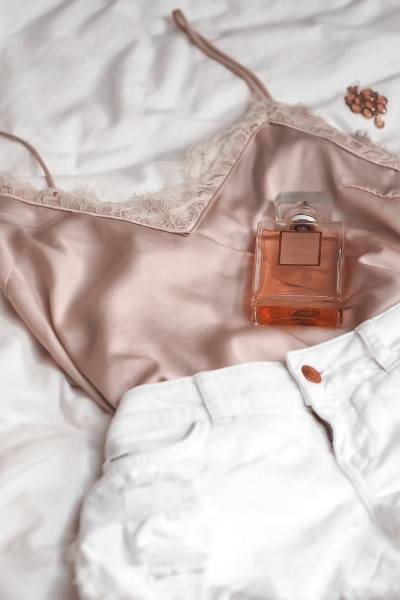Words’ meanings, like many things, tend to evolve over time. New slang and shorthand make their way into our daily vocabulary, influenced by factors like social media. If you’ve been on the Internet, you may have come across phrases like cottagecore aesthetic or academia aesthetic — mostly from TikTok, YouTube, and Instagram. It’s interesting how the meaning of “aesthetic” has changed over the years, so we delved into how it came to be.
Aesthetic, initially
According to the Oxford English Dictionary, an aesthetic refers to “a set of principles underlying and guiding the work of a particular artist or artistic movement”. When used as an adjective, it refers to something “concerned with beauty or the appreciation of beauty”. It’s a concept related to art, which has long been thought to be an exclusive club for artists and the one per cent of society. There are some art enthusiasts and lovers who have been working to change this perception, but it doesn’t take away the original exclusivity of being able to own a masterpiece.
So if we take this into consideration, the original meaning of the word “aesthetic” was very high-brow and luxurious. After all, art was only available to those who have the means of buying it or viewing it in museums before the Internet made it possible to view it online.
Aesthetic as style and feeling
It’s no longer uncommon to hear someone say someone or something is “very aesthetic,” in the sense that it’s visually pleasing. “Aesthetic” has been used as both a noun and an adjective for centuries, but it has become more common as the latter due to the relaxed use of writers, scholars, and the regular social media user. The overarching meaning of “aesthetic” nowadays refers to a person’s overall look or style. It’s not so much their physical appearance, though it does still fit. A person’s aesthetic can mean their fashion sense, their demeanour, or their personal taste in items aside from fashion.
“From how I understand it, aesthetic has something to do with the overall look and feel [of a person or thing],” explained Gamboa, a 22-year-old freelance graphic designer. She shared that she noticed people using the word as an adjective but said it seems “empty” to do so. “I feel like there are better ways to explain something out there if you really find it appealing.”
“Aesthetic, for me, is a term used by people to say something looks nice,” said 25-year-old social media manager and small business-owner Domenica. “It’s a more sophisticated way to say something’s ‘Instagrammable.’” She also says she hears it a lot in terms of fashion and style, citing examples like cottagecore and E-girl aesthetics that are popular on social media.
Overall, what’s “aesthetic” is subjective and changes depending on who’s using it.
“If you look at the original meaning of ‘aesthetic’, as only belonging to an artist, that is a very high position,” Dr. Priscilla T. Cruz, Chair of the English Department and linguistics expert from the Ateneo de Manila University, explained. “For Gen Z, they are very clear about the manner they want to carve out their identities that is equal to everyone. They want to recapture the term ‘aesthetic’ as something they can apply to themselves.” Essentially, having an ‘aesthetic’ means having an overall style or theme that everyone knows, possesses, and understands. “It’s taken an individual [meaning].”

Someone's "aesthetic" can refer to their sense of style. (Photo from: Laura Chouette via Unsplash)
She draws a comparison to how an artist’s aesthetic is determined, not by the artist themselves, but by the critics who view the artwork. Now, “aesthetic” is established by your personal preferences (“Oh, that’s so aesthetic!”) and allows you to define your own identity (“My aesthetic is …”).
How words change meanings
How words like “aesthetic” change meanings is a reflection of society’s — or a portion of it — changing values. “Values in terms of [interests] and shared perspectives,” Dr. Cruz explained. “Language always evolves based on the context of use” and “it changes as much as people and history changes.”
The evolution of meanings is not limited to the English language; the same can be observed in other languages From Taglish to Singlish to Malaysian English, it’s a common occurrence to adopt a foreign language into a more localised context. Originally, these mixed or “creole” languages occurred when two people speaking different languages had no choice but to muddle their way to a mutual understanding. It’s expected, then, that as we become more multilingual, our vocabularies expand and adapt to reflect our personal experience.
“Language doesn’t change overnight, it takes generations,” Dr. Cruz said. “If you can see it’s been happening across a variety of popular texts (like social media and online magazines) for a while then you can see there’s a gradual change happening.” She did say there would be some resistance to unfamiliar words or meanings, but as it becomes more commonly used, the resistance to its new usage lessens.
An example of this resistance is Domenica sharing how she tries to avoid using “aesthetic” in a sentence unless she’s referring to a certain visual category like ‘90s aesthetic or Studio Ghibli aesthetic, for example. Gamboa shared that she finds it “iffy” if she hears someone overuse “aesthetic” as a replacement for another word “without bothering to look it up”.

Language evolves with changes in society, as seen on social media. (Photo from: Darya Ezerskaya via Unsplash)
“Social media has given way to a new genre of language”, Dr. Cruz evaluated. It’s characterised by “short, dramatic, and powerful posts” addressed to a faceless audience. Social media is the main reason for the rising popularity of “aesthetic”, as we understand it today.
Both Domenica and Gamboa think that “aesthetic” rose from social spaces like Tumblr and Instagram circa 2014. Both are visual platforms, which is probably why the meaning of “aesthetic” changed over the years. The core nuance is still there, it just doesn’t seem as “high-brow” or “exclusive” as it used to be.
The more we use words like “aesthetic”, the more they become socially acceptable and “real” in the social space we live in. For most of us, that social space is our established online communities on Facebook, Instagram, and Twitter. But, like any means of communication, we need to be careful in how we use these words. Hopefully, aesthetic doesn’t revert to a “clique” word that only certain individuals can use unironically.
(Cover photo from: Laura Chouette via Unsplash)
For more deep-dives into online culture, here's our opinion on how social media evolving for better or for worse.
Comments, questions or feedback? Email us at [email protected].








